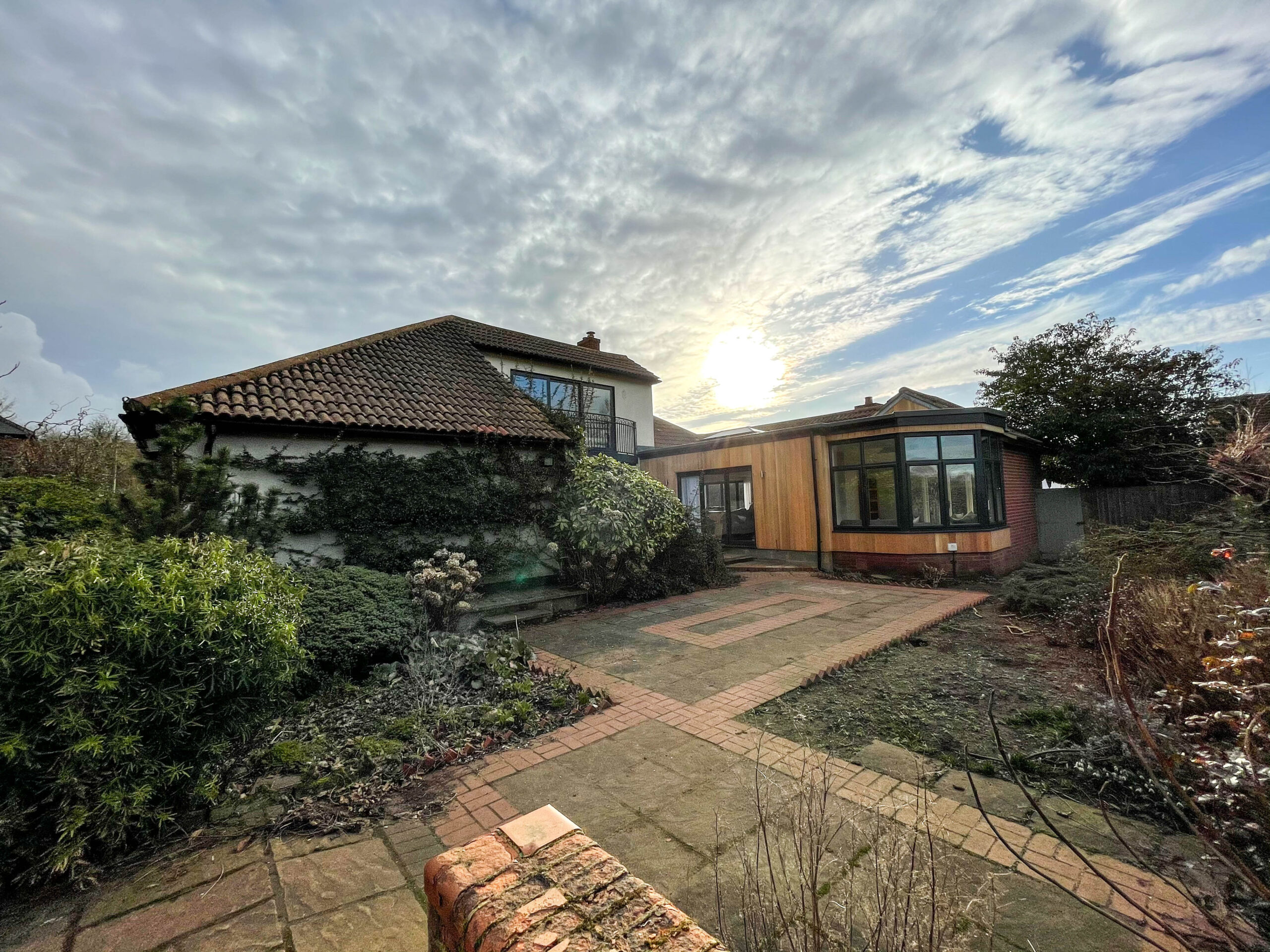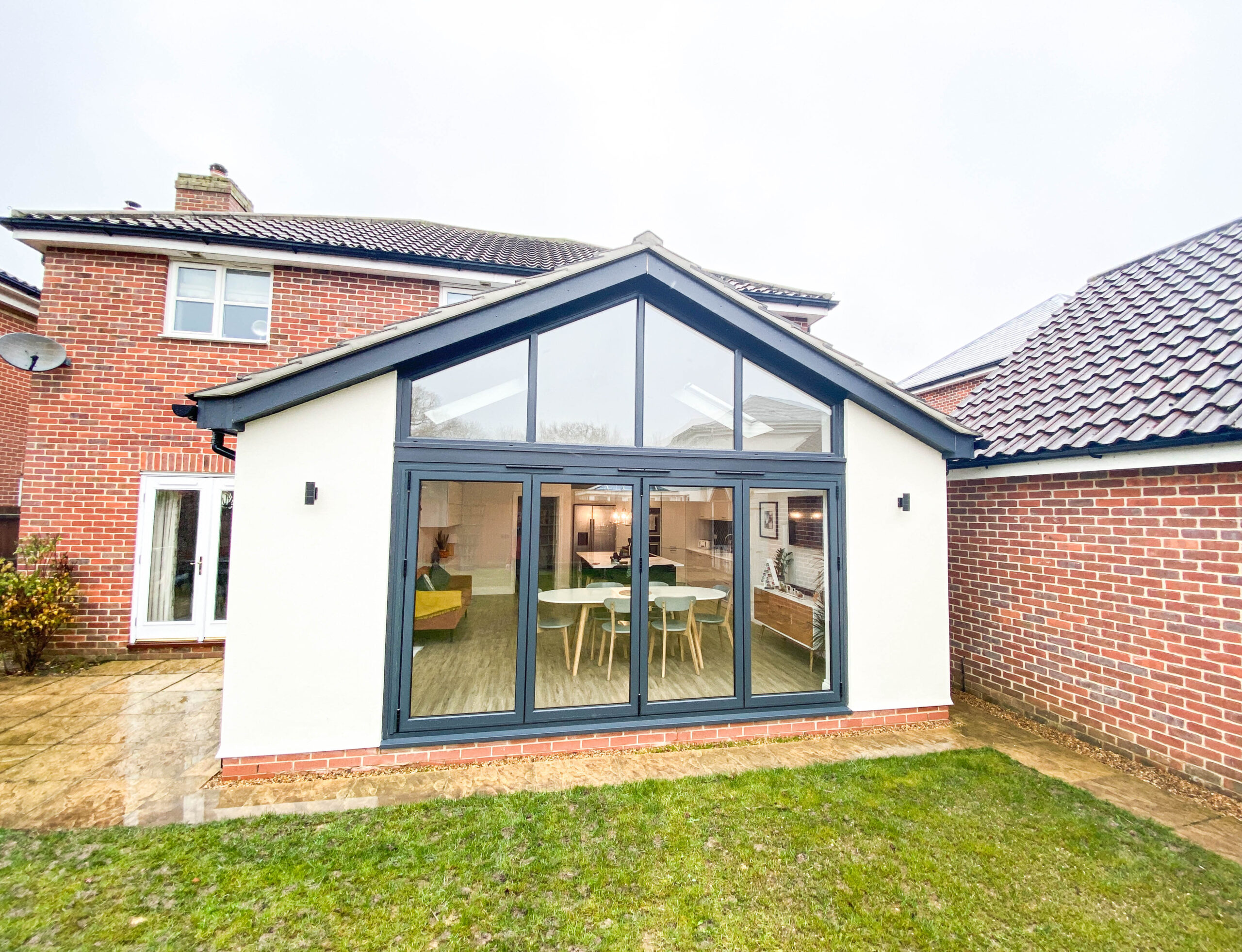
Single-Storey Extension: The Complete Home Extension Guide
A single-storey extension is one of the best ways a person can make their home larger. Consider this article a complete beginner’s guide to this type of home extension.
So if you’re a homeowner who wants to extend their house, and if you’re thinking about doing so with a single-storey extension, this guide will help you to determine if this is the best home construction project for you.
By comparing this guide on single-storey extensions to your own plans and goals, you can develop a better understanding of your home improvement plans moving forward.
What is a Single-Storey Extension?
A home extension is a separate structure that is built onto the side, rear or front of a property. The reason for this is to extend a home, making it larger.
A single-storey extension will consist of only one storey or floor. These extensions can come in varying sizes and shapes. Most commonly, a single-storey extension is added to a home to make an existing room/rooms larger.

Alternatively, if you were after achieving even more room for your home, you could build a double-storey extension. This type of extension is typically more expensive and takes longer to build.
If you’re not sure which home extension is best for you, read our recently published article: Should I Build a Single or Double-Storey Extension?
But to stay on topic, if you would like to hear more about single-storey extensions, such as how much they cost, keep reading this article.
How Much is a Single-Storey Extension?
It’s difficult to provide a single figure for this answer, but you should expect to pay anywhere from £40,000 to £140,000 for a single-storey extension.

As you may have guessed, several factors will affect the cost of a single-storey extension for your home. Such factors include:
- The size of the extension. Most contractors will calculate the cost per square metre for an extension and factor that into their final price
- The difficulty of the project will affect labour costs
- What materials are being used
- Whereabouts you live in the UK. For example, a single-storey extension will typically cost more to build in London as opposed to Norfolk
- Your contractor’s rates
There are a few more factors that can affect the price of a single-storey extension, but you see what we’re saying.
Will It Add Value to a Home?
Improving your home through renovation or extension, for example, can add value to your property.
With a single-storey extension, you are ultimately making a property larger, which in turn makes that property more desirable to the house-hunting market. So does a single-storey extension add value? Yes, it does.

Even if you have no plan to sell your home, adding value to your property means that if you do ever decide to sell, you can let your property go for more than you originally bought it for.
According to Checkatrade, a single-storey extension could add 5-8% value to your property.
Keep in mind, that to add value to your home, the extension being built must be of good quality. That’s why it’s best to seek the help of a professional construction company, like Bespoke Norfolk Group in Kings Lynn, to help you out with your build.
How Long Does a Single-Storey Extension Take to Build?
With any home improvement project, these things take time and to ensure the finished product is perfect, it can’t be rushed. That being said, single-storey extensions are one of the faster home construction projects to undertake, alongside loft conversions.
From start to finish, a single-storey extension could take 2-4 months to build. This is a much shorter timeframe compared to a double-storey extension, which could take 9-11 months.

This rather quick build time is a big reason why single-storey extensions are a popular home improvement method with homeowners. You may wonder how much space can be created with an extension consisting of just one floor, but you’d be surprised what only a little extra space can do for a home.
Single-Storey Extension Before and After: Scatterbrook Cottage in Norwich
Single-storey extensions are incredible for many different reasons. Among creating more space for a home and adding value to a property, a single-storey extension could provide that missing piece to a home, finally bringing a property together in a cohesive way.
To enforce the power of this extension type, we want to show you a real-life example of the before and after of a single-storey extension project. To do that, we’re going to take you to Scatterbrook Cottage in Norwich.

Before Scatterbrook Cottage was converted into a home, it was a 200-year-old Baptist chapel. And while it had served well as a house, Bespoke Norfolk Group were hired to turn this property into a modern home full of character.
A big part of this project was to build a single-storey rear extension onto the property to make the home larger and make way for a stunning open-plan kitchen diner.


From this single-storey extension before and after, the difference in space achieved can be clearly seen. From an appearance point of view, we believe this single-storey rear extension makes this home look even more outstanding than it did before without taking away its original character and charm.


Hear what these clients of Bespoke Norfolk Group had to say about this extension and renovation project in Norfolk:
Planning Permission and Permitted Development Rights
When you decide to improve your property with home construction, eventually the tricky subject of planning permission will come up.
Single-storey extensions will either need full planning permission to build or you may be able to build under permitted development rights. These rights allow homeowners to make improvements to their homes without needing full planning permission.

It is possible to build a single-storey extension under permitted development rights. This is as long as you adhere to specific guidelines. These guidelines are easier to meet for this type of extension rather than double-storey extensions. This is due to the usual size and architectural design and style of a single-storey extension.
You can build a single-storey extension under permitted development rights if:
- You use similar materials to the existing dwelling
- Your extension takes up less than 50% of the land around the existing dwelling
- The extension is less than 4m in height
- Its eaves and ridges are not taller than the existing dwelling
- Rear extensions must not extend beyond the rear wall of the existing dwelling by 3m for an attached house or 4m for a detached house
- Side extensions must take up less than 50% of the width of the existing dwelling
*Each project is different, which is why it’s best to consult a professional with experience before attempting to build under PDR.
Types of Single-Storey Extensions
There are three main types of single-storey extensions.
Single-Storey Rear Extension
By extending a home at the rear, homeowners can use their back garden space to house an extension. This is a popular type of extension as you can drastically increase the size of your home by eating into garden space that may be of less value to you.

Single-Storey Side Extension
By utilising unused space at the side of a property, homeowners can extend their homes sideways by building a single-storey side extension. Depending on how much space a property has on either side, you may be limited by how much you can extend. However, as we have said, even a little extra space goes a long way.

Single-Storey Wraparound Extension
This type of single-storey extension is a combination of the above types. Homeowners can extend sideways and then wrap around to the rear and extend that way also, creating lots of extra room and putting unused space by the side and back of the home to good use.

Single-Storey Extension Ideas
There are multiple ways for homeowners to utilise the single-storey extension to improve their homes. Because, after all, extending a home isn’t just about making it bigger.
With an extension, you have the opportunity to create a better home life, improve the curb appeal of your home, alter your home’s interior, and so much more.
Here are a few single-storey extension ideas to make the most of your home construction project.
Add Exterior Cladding to Your Extension
Cladding can make a huge difference to the exterior of a home, and the same can be said for your extension. Whether you’re using cladding to match up your extension to the existing dwelling, or using it to stand out from the home, cladding could provide a contemporary look to your extension.

Single-Storey Extension With Bi-Fold Doors
Bi-fold doors are hugely popular among homes in Norfolk and the rest of the UK. These stunning doors can be used to provide a seamless connection between a single-storey rear extension and a home’s back garden. Bi-fold doors can make your extension feel larger than it actually is, which is a plus!

Create a Kitchen Diner in Your Home
Alongside open-plan layouts, this is perhaps one of the biggest reasons people decide to build single-storey extensions. Homes suffering from small and cramped kitchens are a familiar story. This also means that there is rarely room for a dining area. But with the added space provided by a single-storey extension, people can create the most amazing kitchen diner spaces.

Compliment With Large Glass Windows
There are plenty of reasons to invite natural light into a home. From incredible health benefits to less electricity cost, natural light is a Godsend for homeowners. If you want more light for your home, try adding large glass windows to your new single-storey extension. If placed perfectly, natural light will begin to flood into your home.

Other Types of Home Extensions
Of course, there are more ways of extending your home than just with a single-storey extension. Consider these other extension options to find the ideal space-creating solution for your home.
Double-Storey Extension
We’ve touched on this extension method briefly. As opposed to adding just one storey or floor to a home, you can add two. With these extensions usually offering the most space, whole new rooms can be added to a property, making it much more valuable and spacious.
Timber Frame Extension
Timber frame extensions can come as both single- or double-storey. Built using timber as opposed to brick and mortar, these extensions are sustainable, usually faster to build, and can also retain heat better than brick. Read: The Quick and Easy Guide to Timber Frame Extensions.

Final Thoughts
Planning for single-storey extensions, as well as building them, are no simple tasks. That’s why it pays to have the experience and skill of a construction company at your back when building an extension.
Through our design and build package, we can take care of every stage of building your dream single-storey extension. From planning and architecture to building and interior design.
Speak to our team today about your single-storey extension project.







